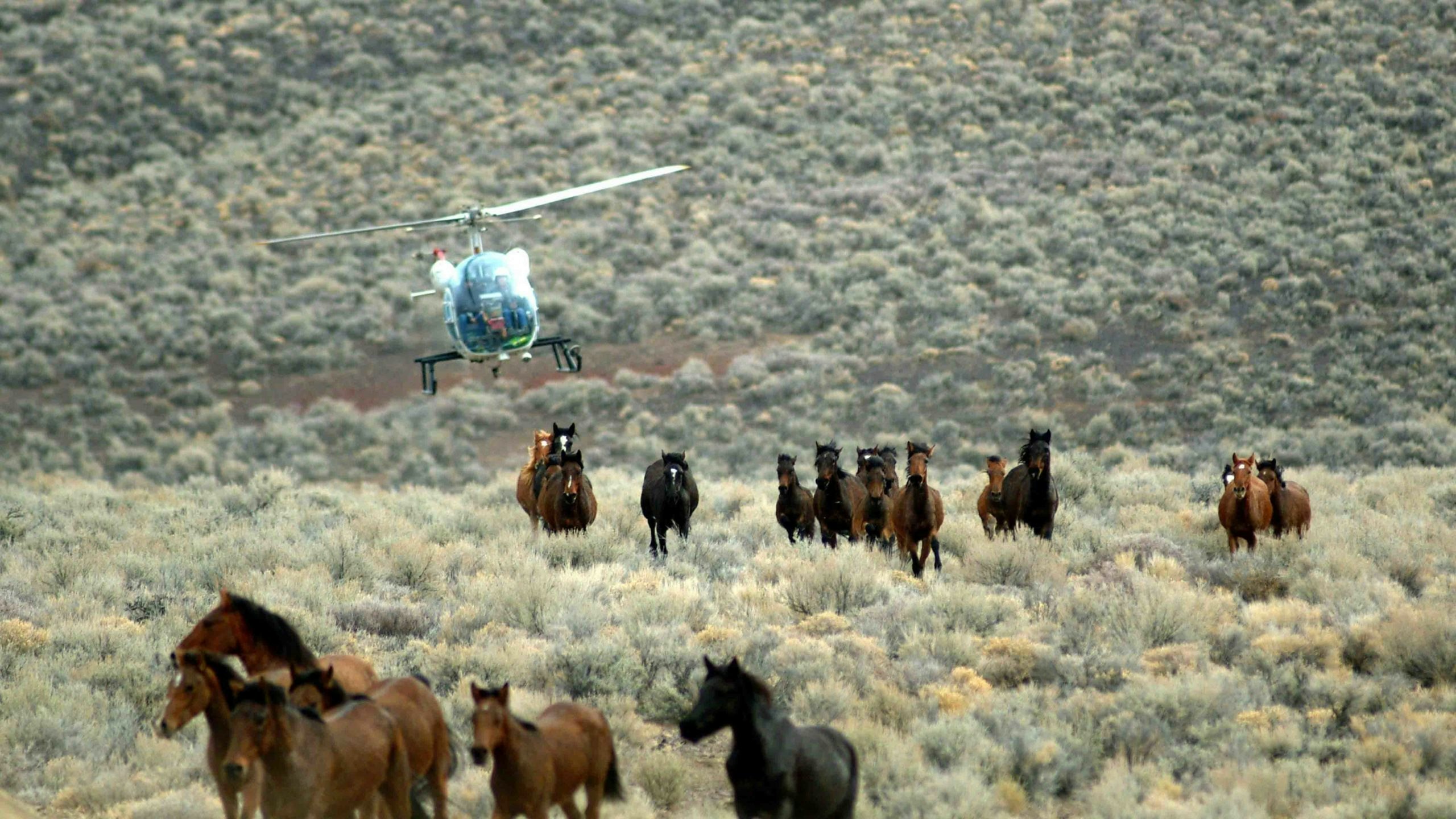A wild horse advocacy group is again calling for a pause in wild horse roundups in Wyoming after a number of horses in Wheatland caught a disease known as the “strangles.”
The U.S. Bureau of Land Management in Wyoming postponed a wild horse and burro adoption event scheduled for April 1 at its facility in Wheatland after some of the horses became sick with an upper respiratory illness streptococcus equi, also known as “strangles.” The next adoption event will be held in May.
The American Wild Horse Campaign’s executive director called on BLM to stop its wild horse roundups in the state pending an inquiry into disease outbreak and deaths at BLM’s two holding facilities in the state.
“We are concerned about how crowded conditions and reported staffing shortages are impacting the welfare of the more than 3,000 wild horses incarcerated in BLM holding pens in the state,” said Executive Director Suzanne Roy.
Strangles is a highly contagious disease caused by a bacteria that crosses mucus membranes in the nose and mouth to infect the lymph nodes, where they cause abscesses that can eventually rupture. The infected lymph nodes become swollen and can compress the upper respiratory tract, hence the name “strangles.”
The horses in Wheatland will be quarantined until they are no longer sick.
BLM spokesman Brad Purdy told Cowboy State Daily on Monday that he was unsure exactly when the strangles outbreak at the facility began, but believed it began sometime in March.
Purdy was not sure how many horses had the illness, however, he said it did cause the deaths of five horses.
Purdy said that the AWHC was “comparing apples to oranges” with its call to stop the roundups due to horses being sick in Wheatland.
“Our next gather is scheduled for the Lander complex and that’s not even until later in the summer or fall,” he said. “I don’t think one thing has an impact on another.”
The “strangles” disease is the most common infectious illness found in horses between 6 and 10 years old. Horses can catch the disease through inhalation or ingestion of the bacteria, such as through horse-to-horse contact, drinking contaminated water or making contact with infected material.
The disease can have a mortality rate of 40%, but the severity of the disease varies and is dependent on a horse’s immune status and the dose and strain of bacteria.
The Wheatland facility can house up to 3,500 horses, but currently houses around 2,700.
While Roy said the AWHC was concerned about crowded conditions at the facility, Purdy disagreed with that assessment.
“If they had 4,000 horses there and only have a capacity of 3,500 horses, then I would agree we’re over capacity,” he said. “However, it’s almost 1,000 fewer than what the capacity is. They’re under capacity, so I wouldn’t necessarily agree with the overcrowding statement.”
BLM Wyoming manages 16 wild horse herd management areas on nearly 5 million acres.





